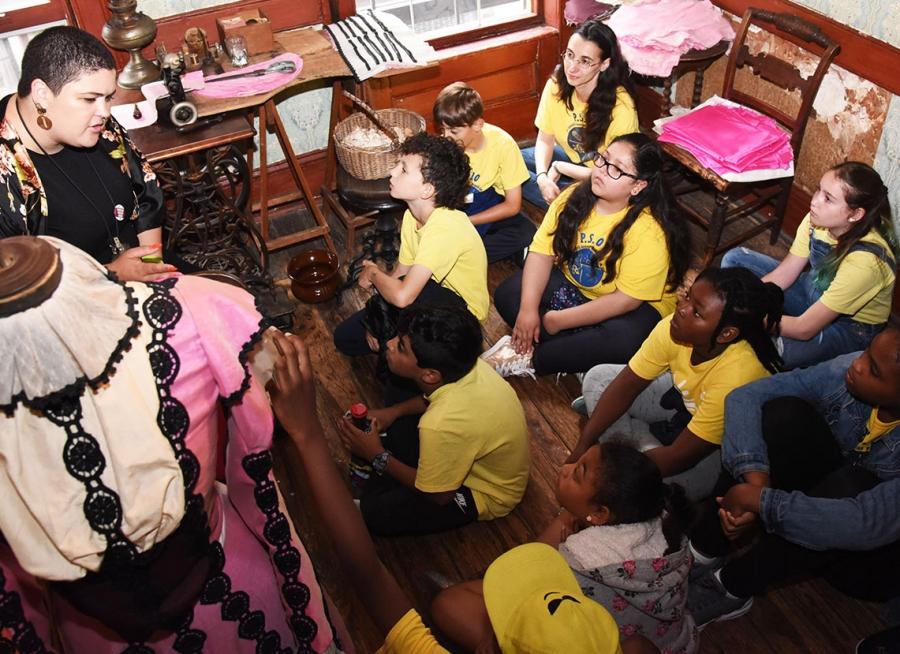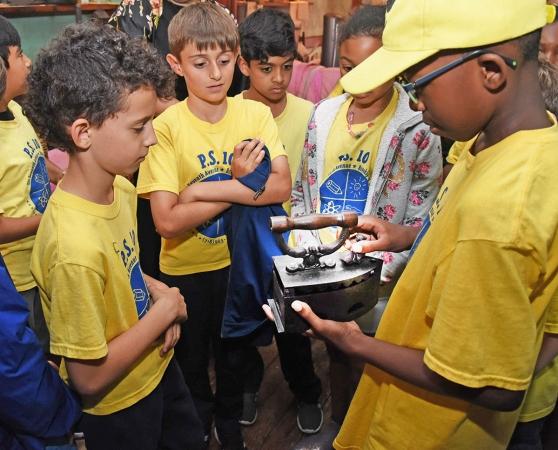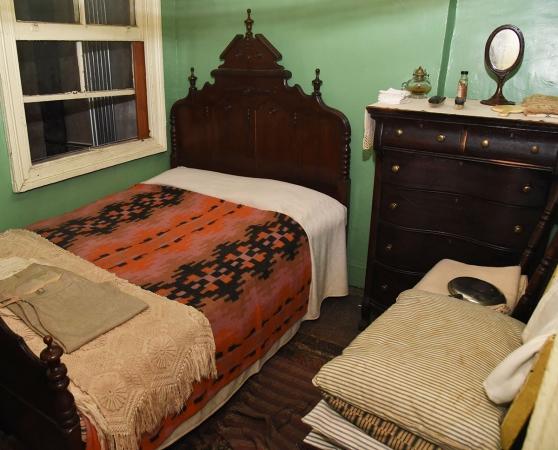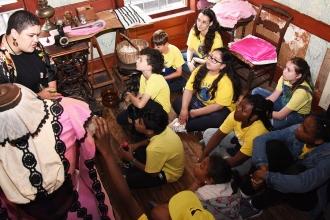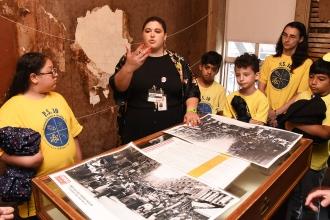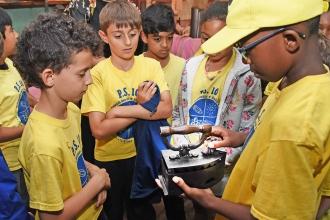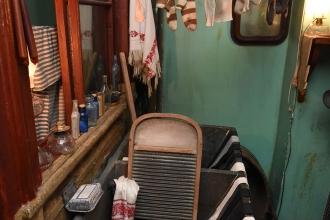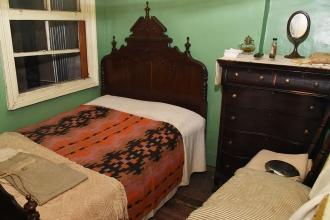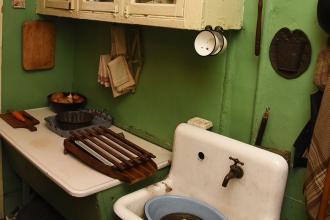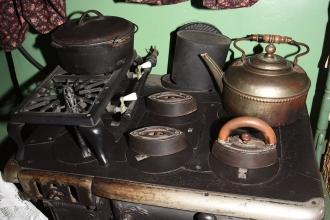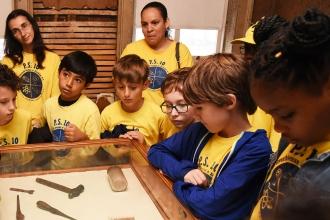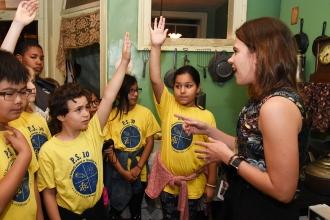“Where did they sleep?” asked one student, wondering how Harris and Jenny Levine and their five children managed in the 1890s with just one bed and a crib.
“I have my own bed,” said his classmate, underscoring how different life was more than a century ago.
“They had to share,” another student volunteered, suggesting different family members used the bed on different days.
Even so, “I think it might have been too crowded,” said another.
Crowded indeed. Harris Levine was a dressmaker and his garment-district apartment was also his “factory.” For 10-12 hours a day, six days a week, the family of seven and the factory’s workers shared the small three-room space. “In this family the children did not help make the clothes, but in other families they did,” said museum educator Erin Reid.
With all those people crowded into the apartment and no air-conditioning, “imagine how hot it would be in the middle of July,’’ said Reid. “And the oven in the kitchen was turned on all day every day, making it even hotter.”
“I would open every single window,” one of the students said.
But having their own “factory” gave the Levines a measure of control. They were able to hire people from their neighborhood who spoke the same language and often emigrated from the same place. And they were able to “choose not to work on Saturday. They were a Jewish family and Saturday was the Sabbath. That was really important,” Reid explained. It enabled the Levines to maintain and preserve a tradition of religious and cultural identity, something immigrants struggle with even today.
Fast forward 20 years to the Rogarshevsky home, where Abraham and Fannie raised six children. One of the first things the students noticed was the two beds. The parents, Reid said, slept on the double bed in the bedroom. The two Rogarshevsky daughters shared the single bed in the kitchen. Because their house was not a workplace — Abraham, also a garment-industry employee, worked outside the home — there was room for more furniture, including a dining table and dresser and what one student called a “fancy couch,” where the four boys laid their heads and shoulders at bedtime. Their torsos and legs rested on chairs and crates lined up in front of the couch.
Working outside the home, Abraham would have had to abide by workplace rules and might not have been able to observe the Sabbath and preserve his traditions the way Harris Levine could. How might that have made him and his family feel? “Stressed,” the students agreed.
But by 1910, some changes made life easier in the building. There was running water and a sink in every kitchen; the Levines had carried water upstairs in buckets filled from a spigot outside. There was piped-in gas for cooking and lights; the Levines had relied on candles, kerosene lamps and coal. And there were indoor toilets.
In both families, the older children watched younger siblings while their mothers did chores. They might also have helped with those chores and might have worked outside the home to help with expenses. That often happened at about 14, Reid said, too close for comfort for the visiting 10-year-olds.
The museum, said Kertesz, helped bring to life “families that worked in the garment industry and how their work influenced their home, cultural traditions and social lives.”
These families had “decisions that were really hard to make” and often involved “sacrifice and compromise” one student said.
“I learned,” said her classmate, “it wasn’t easy” to live in those times.
Located at 97 and 103 Orchard St., the Tenement Museum features various tours as well as a visitor center. Hours are Friday–Wednesday from 10 a.m. to 6:30 p.m. and Thursday from 10 a.m. to 8:30 p.m. Check the tour calendar at www.tenement.org/tours for each day’s schedule. The museum’s call center can be reached at 877-975-3786.
